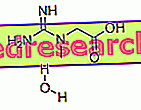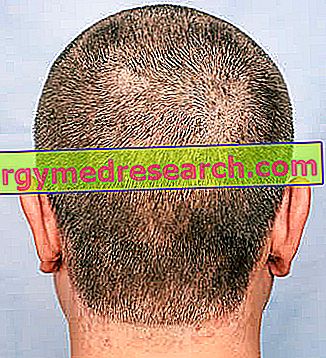By Dr. Nicola Sacchi - Author of the book: Drugs and doping in sport -
Creatine is certainly one of the most used supplements by athletes for its ability to increase performance in sports with anaerobic components.
Its effects have already been proven over time with numerous scientific studies.
The first form of creatine to be placed on the supplement market was creatine monohydrate, which however presents several problems: it is poorly absorbed by the muscle as it is degraded to gastric pH, scarcely soluble in water and with poor absorption by muscle cells, unless it is accompanied by high glycemic index sugars to exploit the muscle transporter.

Athletes who have creatine-sensitive intestines or don't want to take many simple carbohydrates will be glad to know that there are numerous alternatives; in fact, for many people, water retention due to creatine associated with sugars is a problem, a side effect that is best avoided. For these reasons, in recent years, research in the field of supplements has developed new forms of creatine, where it is linked to other molecules that improve absorption. These new creatine formulations are more easily absorbed in the intestine and in the muscle cells, therefore they allow to obtain greater results with lower dosages and with a lower intake of simple carbohydrates. In some cases these molecules, once they enter the muscle, are separated from creatine and bring additional benefits.
Here is a description of these new products.
Ethyl-ester creatine
Technically, this type of supplement is called creatine ethyl-ester hydrochloride, usually abbreviated as creatine ester or CEE. In practice, this substance is formed by reacting an alcohol molecule and a particular acid to creatine molecules.

Ethyl-ester creatine is absorbed directly by muscle cells, without the need for insulin action and without causing swelling.
It is therefore an excellent alternative for those who do not want to take too many simple carbohydrates and for those who are prone to stomach upset and swelling caused by supplementation with creatine monohydrate. Just take 1-2 grams of creatine ethyl-ester before and after training, without any initial overload cycle.
This new molecule is virtually more stable and assimilable than any other form of Creatine. These properties derive from the fact that the thus modified creatine molecule becomes extremely lipophilic (dissolvable in fats); this allows it to easily overcome the cell membranes and thus reach the muscles where it acts.
An effective dosage is already 1.5 / 2 grams and does not require a loading phase.
Kre-Alkalyn
It is a "buffered creatine", in the sense that it is processed at a higher pH, consequently less acid than normal creatine. The buffer effect prevents creatine from disintegrating into creatinine, a process that occurs more quickly in an acid environment. Apparently it is possible to interrupt this process by altering the pH level during creatine production. The slowing down or interruption of the transformation of creatine into creatinine favors a greater absorption of creatine and allows the dosage to be lowered.
Clinical trials have not yet been conducted on Kre-Alkalyn, but according to empirical reports this substance appears to be able to provide the same benefits as creatine monohydrate, without causing stomach upset or swelling. The recommended dosage is 1.5-3 grams of Kre-Alkalyn before and after the workout; no loading phase is recommended.
Methyl-ester creatine
This type of creatine, also known as methylated creatine, is somewhat similar to ethyl-ester creatine, but in this case the creatine molecules are linked to a methyl group composed of one carbon atom and three atoms hydrogen.

Some concerns have been expressed about supplements that contain methyl groups. Methylation allows substances to pass through the digestive tract and be metabolized in the liver without being destroyed; therefore creatine methyl ester is heavier for liver cells.
Although the body can more easily absorb methylated substances, methyl groups can damage the liver or be hepatotoxic. Some experts believe that methylated supplements can aggravate liver conditions in people already suffering from a liver disease. Bodybuilders who do not suffer from liver problems should have no problems taking the recommended dosage, which is lower than that of creatine monohydrate: only 1-2 grams before and after training.
Creatine orotate
The Orotic Acid is able to raise and maintain high levels of ATP within the muscle cell, but not only: it increases the capacity of the cell to capture glucose (thus increasing the reserves of glycogen available) and increases the formation of carnosine and ribose. Increasing Carnosine reserves results in delaying muscle fatigue due to the accumulation of lactic acid. Orotates are mineral salts of vitamin B13 ( orotic acid ). They are extremely effective as carriers of minerals, as the orotic acid forms with them very strong bonds (orotate) which, not being attacked by the digestive system, are able to transport minerals to the parts of the body where they are required, bringing the absorption (which would otherwise be around 3%) up to 60% - 80%. Orotic acid has great physiological importance because it is an intermediate product in the biosynthesis of pyrimidines present in nucleotides of nucleic acids.
This compound is proposed as a creatine with a greater duration of action, due to the synergistic activity between the 2 associated substances. However, it is less absorbable by the muscle than the CEE.
The effective dosage appears to be 5 grams.
Creatine sick
Malic acid is an intermediary of the Krebs cycle, capable of increasing cellular energy availability. Thanks to this new molecule, Creatine's ability to regenerate muscle ATP increases. Another characteristic of creatine malate is that it is much more soluble in water than normal creatine monohydrate, thus greatly reducing the problems associated with enteric absorption of the latter. Malic acid is a natural acid found in many fruits and in many vegetables, and is also present in wine. It is used in cosmetics in skin creams. The dosage of sick creatine recommended by the producers is 5 grams.
Creatine alfaketoglutarato
Also the alpha-acetogluaric acid is an intermediate of the krebs cycle and therefore this creatine has properties similar to the previous one, with the advantage of better stabilizing the creatine molecule at gastric pH, thus reducing the percentage degraded by the stomach.
Creatine pyruvate
Pyruvic acid is a metabolite of glycolysis. It is a substance also contained in some fruits such as apple. Pyruvate improves the transport of glucose into the muscle and this reduces the sense of fatigue. The association of pyruvate with creatine seems to significantly improve the effect of the two substances taken individually, although it is not yet clear how. The recommended dosage by the producers is 2 grams.
Conclusions
Creatine monohydrate can offer enormous benefits to bodybuilders, especially since some complications related to the first formulations of this substance have been resolved. The latest research and technological advances are helping scientists to develop new types of creatine, even more effective. Athletes who have already benefited from taking creatine monohydrate should try these new products to see if they can achieve even more satisfying results. In fact, despite the good theoretical premises, considering the lack or the total absence of noteworthy and independent clinical trials, it is difficult to express a scientific opinion on the real effectiveness of the new forms of creatine.



